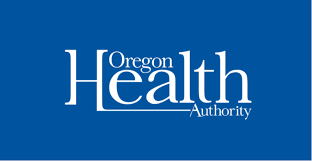Annual costs of premiums alone approach $20,000 per family; exacerbating financial instability and inequities
A new report released today by Oregon Health Authority’s Health Care Cost Growth Target Program showed some of the impacts of rising health care costs on Oregon families and individuals in 2019, as average costs total more than 23% of family expenditures. Oregon’s personal spending for health care rose by 34% from 2013 to 2019, outpacing national averages. Between out-of-pocket costs and rising premiums, high health care costs are jeopardizing the financial stability of people in Oregon, as 10% of people in Oregon reported using up all or most of their savings because of medical bills.
“This report fleshes out with data a troubling picture of the impacts of rising health care costs on Oregon families,” said Jeremy Vandehey, director of the Health Policy and Analytics division of the Oregon Health Authority. “While we’ve known for a long while that the rate of cost growth was unsustainable, COVID showed us in stark relief how important access to affordable care was to Oregon families. High costs not only cause poor health outcomes, but they also do real financial harm to people in Oregon. The data in this report reinforces the need in our state for our cost growth target, which aims to limit annual increases in health care costs statewide to 3.4% over the next several years. And even as the pandemic destabilized so many things, we still know Oregon families cannot sustain further health care cost burdens.”
Some of the impacts of the unsustainable health care cost that the report quantifies include people:
- Delaying care
- Unable to pay medical bills in the past year.
- Experiencing difficulty paying medical bills over time
- Using up savings to pay medical bills
- Incurring significant medical debt
- Declaring bankruptcy.
A recent hearing of the Cost Growth Target Committee focused on real stories of people’s struggles with high medical costs. Testimony highlighted the difficulties Oregonians face with high medical costs and the resulting life quality impacts.
One public comment was from a small business owner who said they have a high deductible health plan which covers nothing until the $8,000 deductible is met. They said “I pay nearly $500/month for what really is catastrophic coverage. I use my Health Savings Account (HSA) to pay out of pocket for all of my health care expenses. This is a formidable barrier to health care. I find myself “going without” because of the high cost of accessing any type of health care.”
Another person shared “So basically I’m paying the equivalent of another mortgage, without having income other than my fixed retirement that needs to last for years. It is also difficult to plan what the amount I will pay for medical care before the deductible is met.”
Underlying these impacts are facts like these:
Commercial health insurance premiums in Oregon have increased by 22 percent between 2013 and 2019, for both single and family plans. In 2019, the average family premium was $19,405 and the average single premium was $6,651. On average, people in Oregon pay between a quarter and a third of their premium costs for family plans, and less than a quarter for single plans; employers pay the rest. However, the employer share of health insurance premiums is often considered part of total compensation and employees often experience these increasing health insurance costs through lower wages.
In addition to paying health insurance premiums, many individuals must also pay a deductible as part of their health insurance plan. A deductible is the amount that an individual pays for their care before their health insurance starts to pay. Unlike health insurance premiums, the deductible is only paid when people seek health care services. Nine out of 10 people in Oregon with commercial health insurance have a deductible. Between 2013 and 2019, deductibles for commercial insurance family plans grew by 40 percent to an average of $3,634, and deductibles for single plans grew 51 percent to an average of $1,958
These cost increases are crowding out other expenses in families’ budgets. Health care and health insurance spending represented 23% of all household spending; the next largest household spending category was housing, utilities, and fuels at 19.8%.
“As a state, we’ve made a choice to begin to tackle these rising costs, which are putting pressure on families and are increasingly forcing difficult choices between health care and other necessities like housing and food,” said Mr. Vandehey. “Given the trends and the dire impacts, we must contain health care cost growth in ways that do not impact people’s health, the quality of health services, or exacerbate health inequities. Working collectively, we can achieve sustainable health care costs – so that families can get the care they need and budget for things other than health care.”
For more details and report methodology, please see: https://www.oregon.gov/oha/HPA/HP/Cost%20Growth%20Target%20documents/Impact-of-Health-Care-Costs-on-Oregonians.pdf
###
Oregon’s Sustainable Health Care Cost Growth Target Program
In 2019, the Oregon Legislature established the Sustainable Health Care Cost Growth Target Program, which sets a statewide target for the annual per person growth rate of total health care spending in the state. The program will monitor and publish reports on health care cost increases and factors driving these trends. For more information: https://www.oregon.gov/oha/HPA/HP/Pages/Sustainable-Health-Care-Cost-Growth-Target.aspx











